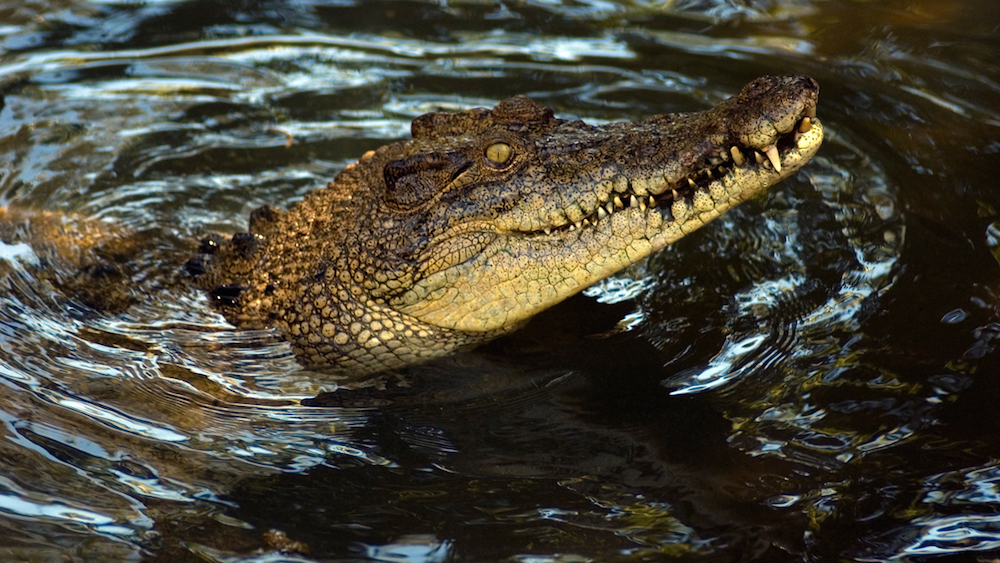Follow Wild Animals in Real Time in Nat Geo Special This Weekend

It usually takes two years or more for wildlife footage to make it into a nature documentary. But this weekend, National Geographic is unveiling a live nature feature that will let viewers follow dozens of wild animals — including bats, bull sharks and leaf-eating monkeys — in real time, offering a glimpse of how these creatures endure in their quest for survival.
The 2-hour "Earth Live" feature, dubbed the "Olympics of the natural world," will be filmed by award-winning wildlife cinematographers scattered on six of the seven continents, according to National Geographic. One of the cinematographers, Skip Hobbie, will film up to 20 million Mexican free-tailed bats (Tadarida brasiliensis) flying out of Bracken Cave, just outside San Antonio.
"This is an all-new thing for me to be doing something live," Hobbie told Live Science. "Often, [for] the wildlife documentaries I work on, it might be two years from when I was on the field filming until it ends up on television." [Photos: See the Animal 'Olympics of the Natural World']
Hobbie has filmed at Bracken Cave — the largest bat maternity colony on record — for years, but filming for "Earth Live" will be challenging, he said. Granted, the bats "emerge like clockwork" every night in the summer, but usually, Hobbie has the luxury of focusing and finding the best shot before selecting his favorite recording for the final product.
Furthermore, when he's filming at Bracken Cave, Hobbie usually has ample time to scope out the bats' predators — such as red-tailed hawks, coachwhip snakes and great horned owls— that eagerly wait by the cave for a tasty meal. This time, he'll have precious little time to get a riveting shot showing the millions of bats spilling out of the cave and into the dark night, some into the mouths of predators, he said.
To prepare, Hobbie does several technical tests and live rehearsals by the cave. He expects to see some novice flyers crash into each other — after all, many of the bats are juveniles that are just learning how to fly. Any unlucky bats that crash and fall are at risk of being eaten by carnivorous dermestid beetles that live on the cave's floor, according to Bat Conservation International.
Hobbie said he hopes his contribution to "Earth Live" will remind people of the important role bats play in the ecosystem as key pollinators and voracious insectivores. For instance, T. brasiliensis is known for eating the corn earworm moth (Helicoverpa zea), an agricultural pest that plagues crops such as cotton, corn, tomatoes and asparagus, according to the University of Florida.
Get the world’s most fascinating discoveries delivered straight to your inbox.
"Bats hold this place of fear in a lot of people's minds," Hobbie said. "I hope to get the message across that bats are not just an amazing spectacle, but really important animals that we need to take care of."
Other animals that will be filmed in real time for "Earth Live" include lions in Kenya; Hanuman langur monkeys in Jodhpur, India; and humpback whales off the coast of Alaska.
"Earth Live" will be hosted by Emmy-award winners Phil Keoghan, a television personality known for hosting "The Amazing Race" on CBS, and Jane Lynch, known for her role as the power-hungry cheerleading coach on the TV series "Glee."
The feature airs at 8 p.m. EDT/5 p.m. PDT (check local listings) on Sunday (July 9) on the National Geographic, Nat Geo Wild and Nat Geo Mundo networks in 171 countries and 45 languages.
Original article on Live Science.

Laura is the managing editor at Live Science. She also runs the archaeology section and the Life's Little Mysteries series. Her work has appeared in The New York Times, Scholastic, Popular Science and Spectrum, a site on autism research. She has won multiple awards from the Society of Professional Journalists and the Washington Newspaper Publishers Association for her reporting at a weekly newspaper near Seattle. Laura holds a bachelor's degree in English literature and psychology from Washington University in St. Louis and a master's degree in science writing from NYU.


